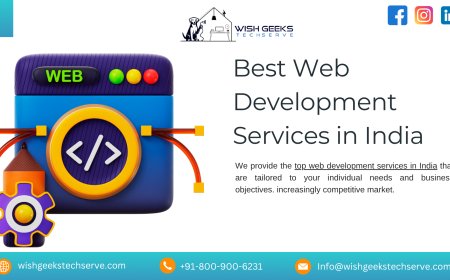How to Visit Aspire Public Schools
How to Visit Aspire Public Schools Aspire Public Schools is a network of high-performing, tuition-free public charter schools serving students across California. With a mission to close the achievement gap and prepare every student for college and life, Aspire has become a model for equitable, outcomes-driven education. For families considering enrollment, visiting a campus is one of the most impa
How to Visit Aspire Public Schools
Aspire Public Schools is a network of high-performing, tuition-free public charter schools serving students across California. With a mission to close the achievement gap and prepare every student for college and life, Aspire has become a model for equitable, outcomes-driven education. For families considering enrollment, visiting a campus is one of the most impactful steps in understanding whether Aspire is the right fit for their child. A campus visit offers more than just a tour—it provides a firsthand look at the school culture, teaching philosophy, student engagement, and community values that define the Aspire experience.
Many families assume that school visits are informal or optional, but in reality, a well-planned visit can significantly influence enrollment decisions. It allows parents and guardians to observe classroom dynamics, speak directly with educators, ask targeted questions about curriculum and support systems, and gauge whether the school’s environment aligns with their child’s learning needs and personality. For students, a visit can reduce anxiety about transitioning to a new school by making the unfamiliar feel more tangible and welcoming.
This guide provides a comprehensive, step-by-step roadmap for navigating the process of visiting an Aspire Public Schools campus. Whether you’re a first-time visitor, relocating to California, or comparing multiple school options, this resource will help you prepare effectively, maximize your time on campus, and gather the insights needed to make an informed decision.
Step-by-Step Guide
1. Identify Your Target Aspire Campus
Aspire Public Schools operates over 30 campuses across six regions in California: the Bay Area, Central Valley, Los Angeles, Inland Empire, San Diego, and Sacramento. Each campus serves specific neighborhoods and grade levels, ranging from transitional kindergarten through 12th grade. The first step in planning your visit is identifying which campus aligns with your residential address or desired location.
Visit the official Aspire Public Schools website and navigate to the “Schools” section. Use the interactive map or school directory to filter by region, grade level, and school name. Note the campus address, phone number, and primary contact person listed. Some campuses serve only elementary grades, while others are K–12 or middle school only—confirming this ensures your visit will be relevant to your child’s needs.
2. Review School-Specific Information
Before reaching out, take time to explore each campus’s individual webpage. Many Aspire schools publish detailed profiles that include:
- Academic programs (e.g., STEM, arts integration, dual language)
- Extracurricular offerings (clubs, athletics, after-school enrichment)
- Student-to-teacher ratios
- College matriculation rates (for high schools)
- Community events and parent engagement initiatives
These details help you formulate thoughtful questions during your visit. For example, if a school highlights its dual-language immersion program and your child is bilingual, you’ll want to ask about language proficiency benchmarks and how students are grouped by fluency level. Preparation transforms a generic tour into a personalized, insightful experience.
3. Contact the School to Schedule a Visit
Aspire campuses do not offer walk-in visits without prior arrangement. Scheduling ensures that staff are prepared to welcome you, that classrooms are observable during active instruction, and that key personnel—such as the principal, admissions coordinator, or lead teacher—are available to answer questions.
You can schedule a visit by calling the school directly using the number listed on their webpage. Alternatively, many campuses provide an online form on their site under “Schedule a Tour” or “Visit Us.” When contacting the school, be ready to provide:
- Your child’s current grade level
- Your preferred date and time (ideally during the school day, between 8:30 a.m. and 2:30 p.m.)
- Any special considerations (e.g., accessibility needs, multiple children visiting, language preference)
Request a visit that lasts at least 45 to 60 minutes. Shorter visits may only include a hallway tour, while longer sessions often include classroom observations, Q&A with staff, and time to speak with current parents.
4. Prepare Questions in Advance
A successful visit hinges on the quality of your questions. Generic inquiries like “Is this a good school?” yield vague responses. Instead, prepare specific, open-ended questions that reveal the school’s culture, academic rigor, and support systems. Consider grouping your questions into categories:
Academic Quality
What does a typical day look like for a student in my child’s grade level? How is student progress measured beyond standardized tests? How are students who are ahead or behind supported? Are there intervention or enrichment programs in place?
Student Support
What services are available for students with learning differences or English language learners? How does the school foster social-emotional development? Are there counselors or mental health professionals on-site?
Parent and Community Engagement
How are families invited to participate in school decision-making? Are there regular parent workshops or volunteer opportunities? How does the school communicate with families—through apps, emails, or in-person meetings?
College and Career Readiness
For middle and high school families: What college counseling support is provided? What percentage of graduates attend four-year colleges? Are there partnerships with local universities or internship programs?
Write your questions down and bring them with you. This ensures you don’t forget key topics during the visit and demonstrates your engagement to school staff.
5. Plan Your Visit Day
On the day of your visit, arrive 10–15 minutes early to allow time for check-in. Most Aspire campuses require visitors to sign in at the front office, present photo identification, and wear a visitor badge. This is standard practice for student safety and is non-negotiable.
Dress comfortably but respectfully—business casual is appropriate. Avoid overly casual attire like flip-flops or tank tops. Remember, you’re observing a professional learning environment.
If you’re bringing your child, ensure they are prepared for the experience. Explain what they’ll see: classrooms, students working, teachers leading lessons, and possibly lunch or recess. Encourage them to observe quietly and ask one or two questions if they feel comfortable. Their impressions matter too.
6. Observe Classrooms and Environment
During the tour, pay attention to more than just the physical space. Look for signs of student engagement: Are students actively participating? Are they working independently or collaboratively? Are posters and student work displayed at eye level? Is the classroom organized, calm, and stimulating?
Notice the tone of interactions between staff and students. Are teachers using affirming language? Do students seem respected and heard? Are there visible systems for behavior management that are consistent and supportive rather than punitive?
Ask if you can observe a short lesson. Many schools will arrange for you to sit in on a 10–15 minute segment of instruction. This is one of the most valuable parts of the visit—it reveals teaching style, pacing, differentiation, and classroom culture in real time.
7. Speak with Staff and Current Families
Don’t hesitate to ask if you can meet with a current parent or student. Many Aspire schools have parent ambassadors who volunteer to share their experiences. Hearing firsthand stories about homework load, teacher responsiveness, or how the school handled a challenge can be more revealing than any brochure.
If you speak with the principal or lead teacher, ask about turnover rates among staff and how professional development is prioritized. High staff retention often correlates with strong school culture and consistent instruction.
8. Take Notes and Reflect
After your visit, take time to reflect while your impressions are fresh. Use a simple template to record:
- What stood out positively?
- What concerns, if any, did you notice?
- How did staff respond to your questions?
- Did your child seem excited or uncomfortable?
- Would you feel confident leaving your child here daily?
Compare notes across multiple campuses. You may find that one school excels in academics but lacks arts programming, while another has strong community events but higher student-to-teacher ratios. Documenting these differences helps you make an objective decision later.
9. Follow Up
Within 24–48 hours of your visit, send a brief thank-you note to the school contact. Express appreciation for their time and mention one specific thing you learned or appreciated. This builds rapport and keeps you on their radar if you have follow-up questions later.
If you’re considering enrollment, ask about next steps: Is there an application deadline? Do you need to submit transcripts or immunization records? Are there orientation sessions for new families? Clarifying these details early prevents delays later in the enrollment process.
Best Practices
Visit During Regular School Hours
While open houses and special events are informative, they often showcase the school at its most polished. To get an authentic view, schedule your visit during a normal school day. You’ll see how the school functions under regular conditions—with transitions, minor disruptions, and the natural rhythm of daily instruction.
Visit Multiple Campuses
Don’t limit yourself to the school closest to your home. Aspire campuses vary significantly in size, culture, and program focus. Visit at least two or three to gain perspective. A smaller elementary school may offer more individualized attention, while a larger K–12 campus may provide more advanced coursework and extracurriculars.
Bring a Notebook and Camera (If Allowed)
Take notes on paper or use a digital device to record observations. If photography is permitted (always ask first), take discreet photos of classroom displays, bulletin boards, or student work. These serve as visual memory aids when comparing schools later.
Observe Student Behavior During Transitions
Transitions between classes, lunch, and recess reveal a lot about school culture. Are students moving quietly and purposefully? Are there clear routines? Are staff present and engaged during these times? Smooth transitions indicate strong systems and student discipline rooted in respect, not fear.
Ask About Equity and Inclusion
Aspire Public Schools serves a high percentage of students from historically underserved communities. Ask how the school ensures equity in access to advanced courses, technology, and extracurriculars. Are there programs to support families experiencing housing instability or food insecurity? How is cultural responsiveness integrated into the curriculum?
Don’t Rely Solely on Test Scores
While academic performance data is useful, it doesn’t capture the full picture. A school with modest test scores but high student engagement, strong parent involvement, and excellent social-emotional support may be a better fit than a school with high scores but a rigid, high-pressure environment.
Involve Your Child in the Decision
Even young children can express preferences. Ask them after the visit: “What did you like?” “What felt strange?” “Would you want to be in that classroom?” Their intuition often reflects what they need to thrive.
Time Your Visit Strategically
Visit during the fall or early spring for the most comprehensive experience. Summer visits may be limited due to staff vacations, and late spring visits may coincide with end-of-year testing or events that skew the school’s normal rhythm.
Be Honest About Your Priorities
Are you looking for a school with strong arts programming? A focus on STEM? A bilingual environment? A nurturing, small-school feel? Be upfront with staff about what matters most to your family. They can tailor the visit to highlight relevant aspects.
Respect the School’s Policies
Aspire schools operate under strict safety and confidentiality guidelines. Never record audio or video without permission. Avoid discussing other families or students. Your behavior during the visit reflects your values and influences how the school perceives your family as a potential community member.
Tools and Resources
Official Aspire Public Schools Website
The primary resource for all visit planning is www.aspirepublicschools.org. The site includes:
- Interactive school locator map
- Individual school pages with contact details, calendars, and mission statements
- Enrollment timelines and requirements
- Annual reports and accountability data
- News and upcoming events
California Department of Education School Dashboard
The California School Dashboard provides state-mandated performance data for all public schools, including Aspire campuses. Use this tool to review:
- Academic performance in English language arts and math
- Graduation rates (for high schools)
- Chronic absenteeism
- College and career readiness indicators
- Student subgroup performance (e.g., English learners, foster youth, economically disadvantaged)
Use this data alongside your visit observations—not as a replacement, but as context.
GreatSchools.org and Niche.com
These third-party platforms offer parent reviews, ratings, and additional statistics. While not official, they can provide insights into parent satisfaction, perceived safety, and extracurricular offerings. Always cross-reference with official sources, as reviews can be subjective or outdated.
Aspire Family Resource Guides
Many Aspire campuses distribute printed or digital Family Resource Guides that outline enrollment procedures, school policies, calendar events, and contact directories. Request a copy during your visit. These guides often include valuable information not available online.
Google Maps and Street View
Before visiting, use Google Maps to explore the campus location. Check nearby public transit options, parking availability, and neighborhood safety indicators. Some campuses are located in urban centers with limited parking—knowing this in advance helps you plan your arrival.
Calendar Apps for Scheduling
Use your smartphone calendar to block time for your visit, set reminders for follow-up tasks, and sync with your family’s schedule. Many Aspire schools send calendar invites after booking—accept them to ensure you don’t miss important dates.
Aspire Social Media Channels
Follow Aspire Public Schools and individual campus accounts on Facebook, Instagram, and Twitter. These platforms often share classroom highlights, student achievements, and upcoming events. Seeing the school in action through authentic content can deepen your understanding before you even step on campus.
Local Community Organizations
Connect with local parent groups, community centers, or nonprofit organizations that support families in education. They often have firsthand knowledge of school climates and can recommend which Aspire campuses are particularly strong in areas like special education, college counseling, or bilingual instruction.
Real Examples
Example 1: The Martinez Family – First-Time Aspire Visitors
The Martinez family moved from Texas to San Jose and were considering Aspire’s César Chávez Academy for their 5-year-old daughter, Sofia. They scheduled a visit during a Tuesday morning and arrived with a list of 12 questions.
During the tour, they observed a kindergarten class where students were using manipulatives to learn number sense. The teacher used bilingual cues (“one, uno”) and encouraged peer collaboration. Sofia immediately pointed to a book about dragons and said, “I want to read that!”
The principal shared that 87% of students at the school are eligible for free or reduced-price meals, yet the school’s ELA proficiency rate is 15 percentage points above the state average. They also learned about the school’s weekly “Family Fridays,” where parents join for dinner and learning activities.
After the visit, the Martinezes wrote in their notes: “The energy was warm. Teachers knew every child’s name. Sofia was smiling. We felt seen.” They enrolled within two weeks.
Example 2: The Lee Family – Comparing Two High Schools
The Lees were deciding between Aspire Titan Academy (Inland Empire) and Aspire Golden State Academy (Los Angeles) for their 9th grader, Marcus, who is interested in engineering.
At Titan, they met with the STEM coordinator who showed them student-designed solar-powered model cars and a partnership with a local tech company offering internships. The school had a 92% college acceptance rate.
At Golden State, they toured a state-of-the-art robotics lab and spoke with a senior who had presented at a national science fair. The school offered a dual-enrollment program with a community college.
The Lees chose Golden State because of its industry partnerships and the opportunity for Marcus to earn college credits. They later learned that Titan had a stronger arts program, but Marcus’s passion was STEM. Their visit helped them align school strengths with their child’s interests.
Example 3: The Thompson Family – Navigating Special Education Needs
The Thompsons’ 8-year-old son, Elijah, has a speech and language delay. They were concerned about whether Aspire schools could meet his needs.
During their visit to Aspire King/Drew Academy, they met with the school’s special education coordinator, who showed them Elijah’s IEP (Individualized Education Program) template and explained how speech therapy is integrated into the school day. They learned that the school employs two full-time speech-language pathologists and uses a co-teaching model in inclusive classrooms.
The principal shared that 30% of the student body receives special education services and that the school trains all staff in differentiated instruction. The Thompsons left feeling confident that Elijah would be supported, not segregated.
Example 4: The Chen Family – Language and Culture
The Chens, who speak Mandarin at home, were drawn to Aspire’s dual-language immersion program at Aspire Sí Se Puede Academy in East Los Angeles. During their visit, they observed a 3rd-grade class where half the day was taught in Spanish and half in English.
They asked how students who spoke only Mandarin at home were supported. The teacher explained that the program begins in TK/K with 90% target language (Spanish) and gradually increases English exposure. Parents are given resources to support literacy at home in both languages.
The Chens also met a parent who had joined the school’s bilingual parent advisory committee. That connection helped them feel welcomed and empowered as non-native English speakers.
FAQs
Do I need to live in a specific district to enroll in Aspire Public Schools?
No. Aspire Public Schools are public charter schools open to all California residents. Enrollment is not based on residential zoning. If a campus has more applicants than available seats, a lottery system is used. However, some campuses may give enrollment priority to siblings of current students or children of staff.
Can I visit without my child?
Yes. Many families visit first without their child to assess the environment, ask questions, and make a decision. You can schedule a separate time for your child to visit later, often during a “shadow day” where they spend part of the day in class.
How long does the enrollment process take after a visit?
After your visit, you’ll typically receive an enrollment packet via email or mail. Complete and return it with required documents (birth certificate, immunization records, proof of residency). Processing usually takes 1–2 weeks. If applying during open enrollment (typically January–March), you’ll be notified of placement by April.
Are visits available in languages other than English?
Yes. Aspire Public Schools provides interpretation services upon request. When scheduling your visit, simply ask if a Spanish, Vietnamese, Mandarin, or other language interpreter can be present. Many staff members are bilingual.
What if the campus I want is full?
If a campus has no openings, you can still apply and be placed on a waitlist. Aspire schools often have movement in enrollment throughout the year due to families relocating or choosing other options. Stay in contact with the school and check in monthly.
Can I visit more than once?
Absolutely. Many families schedule a second visit after receiving an offer of enrollment to meet teachers, see the classroom again, or attend a parent orientation. Revisiting helps reinforce confidence in your decision.
Is transportation provided to Aspire schools?
Some campuses offer limited bus routes based on student density and district partnerships. Others rely on families to arrange transportation. Ask during your visit about available options, including carpool networks organized by parent groups.
What if I’m not ready to enroll after visiting?
There’s no obligation to enroll after a visit. Many families visit multiple schools before deciding. Aspire staff understand this and will continue to answer questions even if you’re not ready to apply.
Are tours available during summer or holidays?
Limited visits may be available during summer months, but classroom observations are not possible since students are not in session. Summer visits are best for administrative inquiries or reviewing documents. For a full experience, plan your visit during the academic year.
Can I speak with a current student during my visit?
Yes, if the school arranges it. Many campuses invite student ambassadors to share their experiences. These conversations are often the most authentic part of the visit.
Conclusion
Visiting an Aspire Public Schools campus is more than a procedural step—it’s a transformative experience that bridges the gap between information and intuition. The decisions you make about your child’s education are among the most important you’ll ever make. A thoughtful, well-prepared visit empowers you to move beyond brochures and statistics and into the living, breathing reality of the school environment.
By following the steps outlined in this guide—from researching your target campus to reflecting on your observations—you position yourself not as a passive applicant, but as an active, informed participant in your child’s educational journey. The questions you ask, the details you notice, and the connections you make during your visit will shape your confidence in the choice you ultimately make.
Aspire Public Schools is built on the belief that every child deserves access to a high-quality education, regardless of background. Your visit is a declaration that you believe in that mission too. Take the time to see it for yourself. Walk the halls, listen to the conversations, watch the light in a child’s eyes when they understand something new. That’s the true measure of a school—and that’s what you’re looking for.
There is no perfect school. But there is a right fit. And with the right preparation, you will find it.































